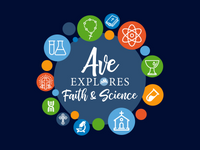By Dani Seckfort
Most young people I’ve met are just trying their best to figure out this crazy world, and that leads them to have a lot of questions. Often these questions arise when the science they learn in school does not match up with the religion they have been taught at Church. It is a disservice to not address their questions, but it can be difficult when you are not a scientist.
The Catholic Church has worked closely with scientists for centuries to present the world with what is true. God is the way, the TRUTH, and the life. It is important to fully present this to questioning young people. So, what are some strategies you can use that do not require a doctorate in science?
- Emphasize the Catholic Church’s relation to science: The Catechism of the Catholic Church clearly states: “…there can never be any real discrepancy between faith and reason. Since the same God who reveals mysteries and infuses faith has bestowed the light of reason on the human mind, God cannot deny himself, nor can truth ever contradict truth.” (CCC 159) Both are searching for truth; they are simply asking different questions. Science asks “what” and “how” while the Church asks “who” and “why.”
- Tell them about the Pontifical Academy of Sciences, an honorary society at the Vatican composed of the top scientists of various religions and backgrounds from all over the world that discusses the leading scientific research and how that information affects Catholic teaching. Some previous members include such Nobel laureates as Ernest Rutherford, Max Planck, Niels Bohr, and Erwin Schrödinger.
- Become familiar with a handful of famous faithful Catholic scientists. For example, Gregor Mendel, Louis Pasteur, Georges Lemaître, St. Hildegard, St. Albert the Great, Blessed Nicolas Steno, and Servant of God Jerome Lejeune. Pope Francis was a chemist in Argentina before joining the seminary; he continues to advocate for science.
- Try including science in your religious teachings. A firm grasp of science or how science relates to Catholic teaching is not required. Simply share whatever you know. People often feel a disconnect between faith and science because they are not talked about together. The simple change of them hearing about science in a church setting, even if it is not the science they have questions about, will help to bridge that gap.
Here are some examples of integrating science with faith if it is snowing outside.
- Water is frozen into beautiful crystals, but it can thaw if it’s not kept in cold conditions. We can be changed into something beautiful when we move towards God, but we may fall back into sin if we don’t maintain that prayerful condition.
- Snow falls as part of the water cycle. Some of it will be used in the ground while some will evaporate back to the clouds. Our Christian love is like the water, no matter whether it is used immediately, it is never wasted. Therefore, we should follow Christ in loving others at all times.
The Catholic Church provides many resources with answers to young people’s burning questions about faith and science. I encourage you to search them out and learn more about these fascinating discussions, I hope this gives you an idea of how to help young people understand the connection between faith and science in their own pursuit of truth.
Dani Seckfort is a Catholic scientist with a doctorate in structural and computational biology and molecular biophysics. She created the Catechist Scientist to help people understand the connection between faith and science.











